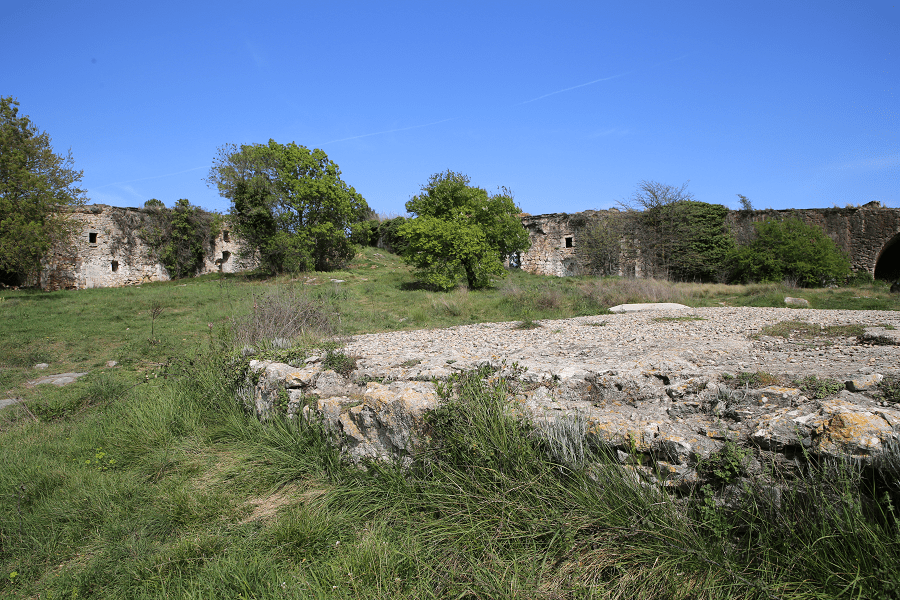The ruins of the Montjuïc fortress (cat. Castell de Montjuïc) is a former fort in Girona province, Catalonia, Spain, declared a cultural heritage of Catalonia of national interest.
It is a modern 17th century fortress with bastions. The plan of the castle has a square structure with facades and paths that reliably protect four bastions or outer towers located at the corners of the square. The main gate is located in the southern part, in the direction of the city of Girona. Two ridges protect the northern and eastern flanks, which are most vulnerable to external attacks. Several buildings and part of the rooms have survived inside the courtyard.
The castle was built of brickwork and rubble. Along with the fortress, four defensive towers were built: Saint Louis in the north, Saint Daniel in the east, Saint Narcissus in the northeast and Saint John in the southwest. Only the foundations of these towers have survived.
It was a bastion built on Montjuïc by order of Philip IV after the end of the War of the Reapers in 1653 to protect access to the Pla de Girona from the north. In 1675, during the wars with Louis XIV, Montjuïc was taken by Marshal Schomberg.
The castle proved to be very useful during the French War, especially during the three sieges of the city (during 1808 and 1809). It was occupied by the French on June 11, 1811, and in 1814, at the end of the war, it was partially destroyed by the order of Marshal Louis Gabriel Suchet after the Suchet Tower was built in 1812.
In 1843, it was further destroyed by the bombing of General Prim.
The castle is located above Girona at the highest point of Montjuïc, 219 meters above sea level. The mountain offers a wonderful view of the city.
GPS coordinates: : 41° 59′ 37″ N, 2° 49′ 54″ E
See here Montjuïc Castle in Barcelona.

















